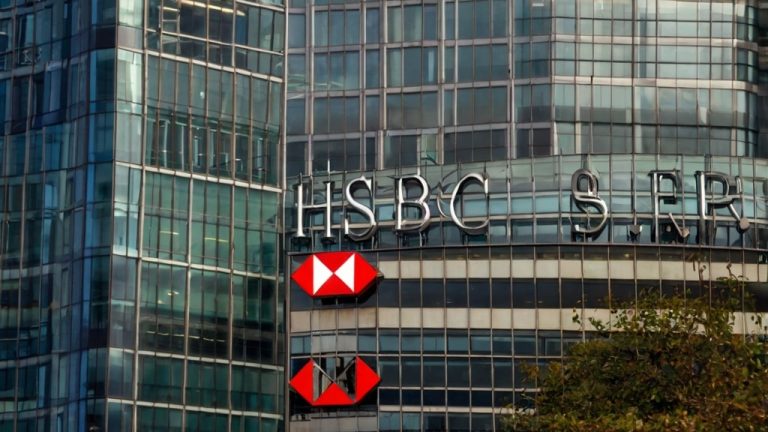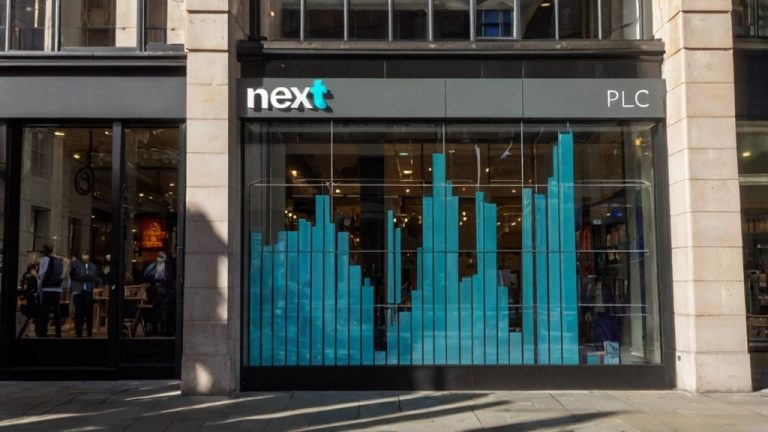Today, Tron (TRX), the blockchain with high throughput and used to drive content and payments in a decentralised format, is experiencing headwinds with a drop to 0.5% and at 0.298, a continuation of a seven-day decline of close to 7% against the side.
Since the pullback, the ecosystem of Tron has been resilient, with a market cap of 28 billion dollars, the 11th-largest cryptocurrency, and transacting more than 60 per cent of USDT transactions worldwide. The circulating supply is over 94 billion TRX, and the day-to-day trading volume is 648 million, demonstrating constant interest.
With macro factors such as US inflation statistics supporting the broader markets, Tron’s on-ramp boom to $26 million within 90 days through Mercuryo indicates its payment ability. Analysts are optimistic as they predict an average of $0.51 in 2025, with steady expansions of the ecosystem and steadycoin dominance.
TRX Breaks $0.30 Support: Technical Weakness Signals Short-Term Caution
The price of Tron became bitter at the end of the week before, as the key support of the coin was broken at a value of $0.30 in the context of the sale in the spot market. TRX is at $0.298, 0.5 per cent below 24 hours, and performing poorly compared to the 3.8 per cent gain of the global crypto market. It is a loss of 6.9 per cent over the 7 days versus peers in smart contracts, which are gaining by 2.7 per cent, highlighting the localised bearish trend.
TRX on the daily chart is flattening around the 50-day moving average of 0.305, and the RSI is at 42-neutral, but oversold. The MACD histogram indicates a dampening bullish divergence, which is indicative of a further decline to $0.29 unless the volume rebounds.
Weekly pointers present a ray of hope: the 200-day MA which has been increasing since April, not only has long-term support at $0.28. A retest of 0.30 would magnetise buyers according to the technical analysts, but liquidity traps within the levels risk a 12 per cent fall to 0.26.
This is not an isolated dip, as the percentage of Bitcoin dominance increases to 58. Nevertheless, the basics of Tron, such as 600 billion of stablecoin liquidity, indicate that the selling off is overrated, and smart traders can be set up to buy.
Mercuryo TRON On-Ramps to $26M in Only 90 Days
This is a positive development. Tron’s fiat-to-crypto gateway reached a significant inflexion point: $26 million in on-ramp volume processed in the fourth quarter, as a result of payment provider Mercuryo. This dynamic expansion, zero to the world, makes the contribution of Tron a direct success as a facilitator of mainstream acceptance.
The milestone highlights the low-price and high-speed architecture of Tron, which is suited for daily transactions. By integrating Mercuryo, users in the emerging markets where remittance charges are a nightmare in the traditional systems can convert fiat to TRX and USDT-TRC20 instantly. As the first deal at the global level, Mercuryo has pointed out that this increase matches the 2,000+ TPS of Tron.
There is a positive buzz around social media with posts highlighting how Tron is transforming into a payment backbone of the crypto world. The inflow increases the network activity, which has increased daily transactions by 8% to 15 million, as well as introduces new capital to DeFi protocols such as JustLend. The TRX burn rates will rise faster as the on-ramp volumes increase, increasing the token scarcity.
USDT-TRC20 Preeminence: Tron Processes 60% of Tether Volume
The stablecoin flows market dominance of Tron cannot be challenged, as the supply of USDT-TRC20 reached more than $79 billion in October 2025, which is more than half of the total supply of Tether. It has become the network that processes 60% of all transactions of USDT globally, surpassing the rails of Ethereum, which are heavy with gas.
This authority is due to the efficiency of Tron, which is delegated proof-of-stake (DPoS): finality in sub-seconds and cents per transfer. The surge is credited by developers to integrations such as THORChain to cross-chain USDT swaps, which were launched earlier this month, allowing the seamless liquidity between Tron and its competitors, such as Solana.
To the TRX holders, it equates to actual utility: the greater the stablescoin activity, the higher the demand for bandwidth where the native gas token is TRX. According to JustLend DAO, Q3 recorded higher daily fees on stablecoin operations alone of $2 million. Tron in the US would command 10% of the market share by 2026 as the global remittances are projected to reach as high as $800 billion per year, analysts project.
Justin Sun Teases Fullset Blockchain Conference Spotlight on Web3 Vision
On November 1, 2025, Justin Sun, the founder of Tron, will present the Web3 roadmap of Tron in the Fullset Blockchain Conference in Kyiv. Recently, after his keynote at TOKEN2049, Sun will be speaking on expansions around the world, such as AI-enabled dApps and zero-knowledge proofs to support privacy-enhanced payments.
These presentations by Sun frequently spur price activity – TRX surged 15% after Hype on Tron having a global settlement layer, token2049. Expect Kyiv to increase its efforts in reaching out to Europe, with MiCA-compliant stablecoin pilots. Sun is looking to make TRX the tokenised real-world asset (RWA) with Tron having 200 million user wallets.
The coincidence is the event with the Q4 upgrades of Tron: upgraded cross-chain bridges and USDD 2.0 liquidity mining Phase IX, which includes up to 20% APY on stablecoin pools. Such catalysts would prompt a rally in case Sun unleashes the bombshell of partnerships.
JustLend DAO Phase IX Kicks off: $7.6B TVL JST Burns and Deflation
JustLend DAO, the DeFi giant of Tron, launched a new incentive program, Phase IX of its USDD 2.0 initiative, on the first day of October, adding impetus to a 7.6-billion TVL ecosystem. Having 477,000 users and quarterly fees of 2 million, now the revenue-sharing scheme of the protocol serves as an excess-profit prediction of JST token burns- Tron governance utility.
The new levels set APYs of between 5-15% depending on the deposit amount, and the company aims to reach 10 billion TVL by the end of the year. Burns which are linked to lending revenue have a deflationary cycle: the more activity, the more income, the more purchases made and the less supply. JST, which is up 6.8% to $0.0335 due to the market weakness, is a direct beneficiary of this mechanism.
The program regulates the risks of dilution through a fixed supply of 9.9 billion, which is managed transparently through JustLend Grants DAO. With USDD minting picking up at a new pace, currently standing at 500 million outstanding, JST will appreciate 20% on the basis of continuous protocol expansion.
JustLend DAO Launches Phase IX: $7.6B TVL Fuels JST Burns and Deflation
TRX projections are ambiguous yet positive. In the short term, Changelly will gain 2.6% by October 29 to get to $0.307, whereas Bitget will get to $0.3004 in November. The average values are at 0.299 every month with a volatility of 4% indicating a consolidation.
More optimistic in the long term: Cryptopolitan forecasts an average of 0.51 in 2025 with a range of 0.179 to 0.613 due to bullish engulfing action on weekly charts. Wallet Investor expects $0.395 at the end of the year, with highs of $0.421. PricePredictions.com is aggressively calling for a 220% moonshot in October at $1.09 in case it is broken at resistance at 0.325.
As far as 2026, there are escalations to $0.749 -0.953; 2027 may break through 1 at 1.09- 1.29. Bear cases are alerting of the possibility of floors of 0.30 in case the macro headwinds continue, but 71% of the indicators are green in the case of H2 2025.
On-Chain Metrics Explosion: 15M Daily Transactions and 200M Wallets Achievement
Tron is alive with energy: the transactions grow 8% each week, 15 million daily, due to the stablecoin mania. Active addresses hit a high of 1.5 million, and TVL in DeFi applications such as SunSwap hit 1.2 billion.
The 200 million wallet milestone reached by the network last month solidifies the fact that it is a mass-market block, beating Cardano and approaching BNB Chain. Q3 developer commits increased 25% and the developer commits were concentrated on RWA tokenisation and AI oracles.
Energy efficiency glows: DPoS of Tron uses 99% of the power of peers in proof-of-work, which follows the trend with ESG. TVL would reach 20 billion dollars by 2026 with cross-chain flows because bridges to Ethereum and Solana will be fully developed.
Risks Loom: Market Correlation Problems and Regulatory Scrutiny
Tron’s ascent isn’t risk-free. Continued SEC investigations into the promotions of Justin Sun may limit upside, and the correlation of 0.85 BTC implies that Bitcoin falls, dragging TRX. The 60% market share of USDT-TRC20 is open to centralisation criticism, which can trigger outflows in case Tether is audited.
Volatility remains at 12% every month, and token unlocks increase 5 billion TRX annually through inflation. However, this is compensated by burns on fees, -50 thousand per day, and keeps the peg stable.
The Horizon of Tron Payments Powerhouse Sees a $1 in a Maturating Ecosystem
The two aspects of Tron can be summed up on October 29, 2025: TA dips covering fundamentals that are about to explode. Having on-ramps of $26 million, dominance of USDT, and DeFi booms, the entry cost of TRX, which is $0.298, seems a blessing to the visionaries.
With Fullset approaching and the prognostications being that it’s over 0.50 and above, Tron is not merely surviving; it is evolving to conquer the world of finance. To the holders, the thesis is straightforward: utility beats hype. The trillions of value anchored by the blockchain that began with memes have yet to be decentralised.












 Bitcoin
Bitcoin  Ethereum
Ethereum  Tether
Tether  XRP
XRP  USDC
USDC  Wrapped SOL
Wrapped SOL  TRON
TRON  Lido Staked Ether
Lido Staked Ether  Cardano
Cardano  Avalanche
Avalanche  Toncoin
Toncoin